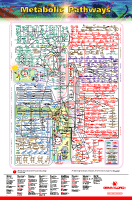Reading Scott and Scurvy, a fascinating post on Idle Words about the scurvy which plagued Robert Scott's 1911 expedition to the South Pole:
Now, I had been taught in school that scurvy had been conquered in 1747, when the Scottish physician James Lind proved in one of the first controlled medical experiments that citrus fruits were an effective cure for the disease. From that point on, we were told, the Royal Navy had required a daily dose of lime juice to be mixed in with sailors’ grog, and scurvy ceased to be a problem on long ocean voyages.
But here was a Royal Navy surgeon in 1911 apparently ignorant of what caused the disease, or how to cure it. Somehow a highly-trained group of scientists at the start of the 20th century knew less about scurvy than the average sea captain in Napoleonic times. Scott left a base abundantly stocked with fresh meat, fruits, apples, and lime juice, and headed out on the ice for five months with no protection against scurvy, all the while confident he was not at risk. What happened?
It's a fascinating story of how medical practice which lacks knowledge of underlying causes can become distorted over time. It's also kind of heartbreaking to read about the polar missions failing again and again all because they're working from the wrong model of scurvy as a disease.
Showing posts with label biology. Show all posts
Showing posts with label biology. Show all posts
Sunday, May 9, 2010
Thursday, April 29, 2010
ATP Metabolism
And on the subject of overwhelming biological data, this is the IUBMB-Nicholson chart of all the metabolic pathways that go into ATP management in mitochondria and chloroplasts, ATP being the basic energy currency of biological systems. There's a browser-crashing full sized pdf at the link, or click the above thumbnail for a jpg.
Labels:
biology,
compbio,
knowledge management
Friday, April 23, 2010
The Long Tail of Life
Saved for future reference from kottke.org:
the Long Tail of Life: During an 11 month study in 2007, scientists sequenced the genes of more than 180,000 specimens from the Western English Channel. Although this level of sampling "far from exhausted the total diversity present," they wrote, one in every 25 readings yielded a new genus of bacteria (7,000 genera in all).
See also: Venter sequences the Sargasso Sea (and download the dataset here!); a review on the emerging field of metagenomics; genomic databases at NCBI (sequences of everything from the human genome to three strains of ebola); Helicos high-speed sequencing; a nice powerpoint on next-gen short-read sequencing and sequence assembly (including notes on Eulerian walks on De Bruijn graphs, the method used by sequence assembly algorithms like Velvet.) Man, guys, sequencing is the coolest.
the Long Tail of Life: During an 11 month study in 2007, scientists sequenced the genes of more than 180,000 specimens from the Western English Channel. Although this level of sampling "far from exhausted the total diversity present," they wrote, one in every 25 readings yielded a new genus of bacteria (7,000 genera in all).
See also: Venter sequences the Sargasso Sea (and download the dataset here!); a review on the emerging field of metagenomics; genomic databases at NCBI (sequences of everything from the human genome to three strains of ebola); Helicos high-speed sequencing; a nice powerpoint on next-gen short-read sequencing and sequence assembly (including notes on Eulerian walks on De Bruijn graphs, the method used by sequence assembly algorithms like Velvet.) Man, guys, sequencing is the coolest.
Labels:
biology,
science,
technology
Friday, November 20, 2009
High Speed Sequencing
This video dedicated to my undergraduate degree in biology, in which it was never deemed necessary to introduce the fact that sequencing technology more sophisticated than the Sanger method exists. This is an animation explaining the process behind Helicos's new single-molecule sequencing technology. Like all other modern sequencing methods, this technique is based on short-read sequences-- DNA is replicated and then broken into millions of tiny fragments (25-50 base pairs at the low end), all of which are sequenced simultaneously. Given about 30-fold coverage of your genome, you can align these fragments to confidently reconstruct it as a single sequence.
Also of note, the Velvet algorithm is one cool sequence assembly program which, instead of aligning DNA fragments by simply looking for overlapping regions between them, plots all the fragment sequences generated onto a De Bruijn graph, and then uses principles of graph theory to condense them into a single sequence. Yay math!
Labels:
biology,
compbio,
computing,
pattern recognition,
technology
Wednesday, October 28, 2009
breve
breve is a free/open-source 3d environment for multi-agent simulations and artificial life, which can be used to simulate things like BZ reactions, evolution by natural selection, and the flocking patterns of birds (which by the way is a good example of how realistic behavior can be produced using a drastically simplified model).
Also on the site is the breveCreatures screensaver, a simple simulation of evolution by selective pressure which you can download on its own. Creatures are initiated as random configurations of moving blocks, and selected through successive generations for the most effective walking behavior. The video below shows the products of some other evolution processes in breve:
Also on the site is the breveCreatures screensaver, a simple simulation of evolution by selective pressure which you can download on its own. Creatures are initiated as random configurations of moving blocks, and selected through successive generations for the most effective walking behavior. The video below shows the products of some other evolution processes in breve:
Labels:
biology,
programming,
simulation,
videos
Sunday, October 11, 2009
Steven Strogatz's Sync
Steven Strogatz's wonderful book Sync discusses how synchrony in biological networks is not only common, but neigh-inevitable. His opening discussion of fireflies is particularly vivid: along some riverbanks in Southeast Asia, populations of fireflies stretching for miles will all flash in synchrony, a phenomenon which baffled western explorers for decades. It turns out the effect is easy to replicate in a model-- say you have a collection of periodic oscillators which fire a burst of light at their peak and then reset, you can achieve synchrony if you make it so that each oscillator, when it fires, bumps its neighbors forward a bit in their cycles. Because firing induces a forced reset of the cycle, oscillators will be pushed forward in their cycles until they fall into sync, and then stay locked there; this effect takes off in small groups and quickly grows until the entire network is firing together.
The important points here being that a) neurons do this too (in fact it can be hard to get spiking neural networks to stop doing this) and it's really probably important to coding somehow, and b) you guys, fireflies are totally attempting to form some sort of massive insect-based consciousness here.
You can read more on the subject in the preview of the first chapter and a half, posted on Google Books.
The important points here being that a) neurons do this too (in fact it can be hard to get spiking neural networks to stop doing this) and it's really probably important to coding somehow, and b) you guys, fireflies are totally attempting to form some sort of massive insect-based consciousness here.
You can read more on the subject in the preview of the first chapter and a half, posted on Google Books.
Monday, September 21, 2009
Swine Flu Aftermath in Egypt
Hmm, and Egypt is now dealing with the repercussions of their decision during last May's swine flu panic to cull over 300,000 pigs in the country: before the cull, the zabaleen were Christian pig-farmers living on the outskirts of Cairo and other cities who went door to door collecting trash, which they either sold to recycling facilities or fed to their pigs. Now that they've been driven out, the streets of Cairo are filling with excess garbage which the city lacks the infrastructure to handle properly, creating a health hazard far worse than the flu itself.
Sunday, August 30, 2009
Subscribe to:
Posts (Atom)

